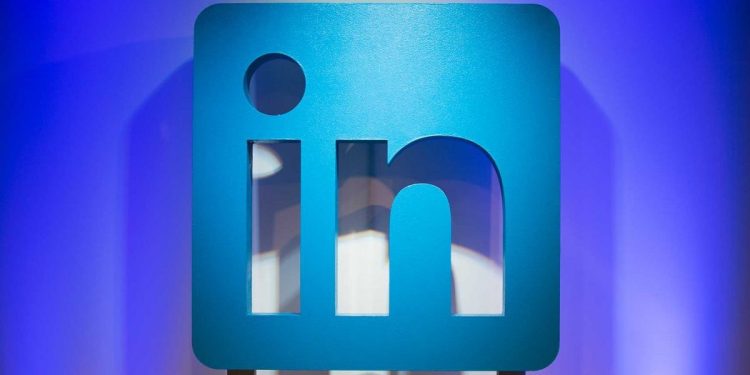LinkedIn, which with over 20 million listings is the world’s largest job marketplace, will soon roll out changes aimed at making it easier for recruiters to spot qualified candidates and for job seekers to stand out from the crowd. The company detailed a few of the upcoming improvements — some of which were previewed in February — during a conference call with reporters on Monday.
First up is a refreshed LinkedIn homepage with a new, optimized-for-mobile scrolling design and one-click access to job searching and browsing tools. Job seekers will be able to quickly specify preferences in LinkedIn Career interests to filter for things like remote work and to view payment information provided by employees and employers from LinkedIn Salary (which was previously a LinkedIn Premium feature). And searches will be automatically saved, so users will be able to dive back in with a tap or click from the Jobs page.
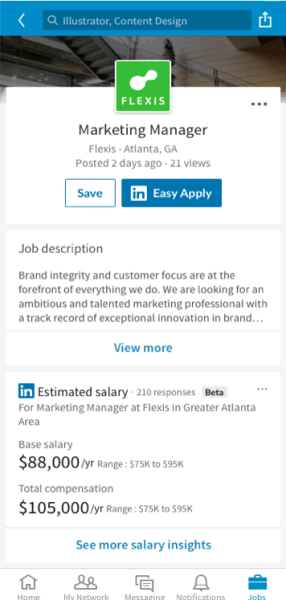
Above: LinkedIn Salary Insights on Jobs.
Monica Lewis, director of product management at LinkedIn Jobs, revealed that LinkedIn members apply to around 25 million jobs a week and said that job recommendation improved 20% year-over-year in 2018, meaning someone found a job through the platform every eight seconds. She predicts a further uptick with the rollout of the new Instant Job Notifications feature, which lets LinkedIn members create search alerts for listings that meet a set of criteria and which takes into account posts they’ve engaged with, their career path and those of their peers, and their skills and work experience.
LinkedIn users who are among the first 25 applicants are up to 3 times more likely to land the job, on average, Lewis said. She explained that the search feature can help get you to the right listings more quickly. “If I were to run a search on LinkedIn for ‘product manager,’ I don’t have to tell LinkedIn that I work in an internet company,” she added. “LinkedIn already knows that about me, so I’m more likely to see search results at other internet companies come to the surface rather than, say, a product manager job at a biotech company.”
June 5th: The AI Audit in NYC
Join us next week in NYC to engage with top executive leaders, delving into strategies for auditing AI models to ensure fairness, optimal performance, and ethical compliance across diverse organizations. Secure your attendance for this exclusive invite-only event.
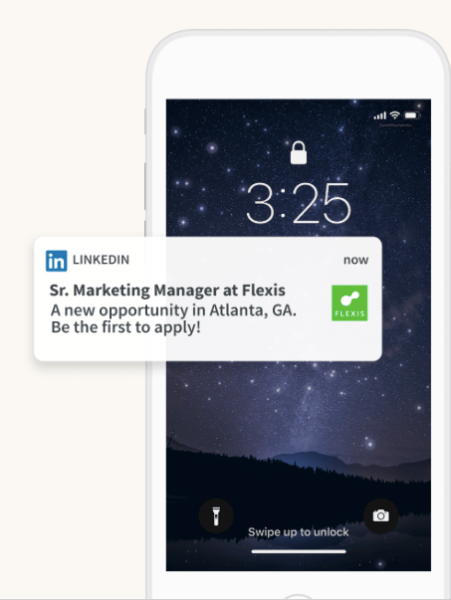
Above: LinkedIn Instant Job Notifications.
In a related change, LinkedIn will soon make it easier to request referrals from friends and colleagues by surfacing shortcuts on pages where those people work. And it’s piloting skills assessments, which will allow would-be employees to take a 10-15 minute test to validate the skills they’ve listed on their LinkedIn profiles.
“We already know the professionals today are using their community to help them get a job. In fact, 85% of people say their community helped them land a job, [and] candidates who are referred are up to 9 times as likely to land a job as other candidates,” said Lewis. “But it’s not the only way you can stand out. [Skills tests] are powerful in helping qualified candidates really showcase their capabilities.”

Above: Specifying location in LinkedIn Career interests.
On the recruiter side of things, LinkedIn will soon launch a revamped Recruiter and Jobs experience, which Lewis described as a “seamless experience” between LinkedIn Recruiter, LinkedIn Jobs, and LinkedIn Pipeline Builder. This will enable hiring managers to source for candidates in specified locations, see applicants who applied to roles, and view Pipeline Builder leads for which they’ve searched to create a campaign. These campaigns will leverage metadata and job descriptions to develop a “deep understanding” of who might fit a particular role and to create curated candidate search results pages.
“As you save job applicants — as you message them back and as you pass on certain ones — [LinkedIn] starts to understand what is really a great fit for this particular role, and the results continue to get smarter,” said Recruiter group product manager Jared Goralnick.

Above: LinkedIn screening questions.
To that end, LinkedIn is broadly launching a Recommended Candidates feature that will surface a daily list of 25 results and will roll out granular controls that surface conversation histories with candidates across organizations. Additionally, it’s adding the ability for recruiters to set screening questions for jobs and to respond to applicants or groups of applicants with a single click.
That said, recruitment and job-seeking won’t be LinkedIn’s exclusive areas of focus this year or in the years to come. Increasingly, according to VP of product John Jersin, the company will invest in products that promote engagement.
“We’ve seen from Glint, a company that we acquired [in October 2018], that workers who are disengaged with their company are 12 times more likely to leave,” he said. “And, as a result, engagement with the company is something that a lot of employers are paying a lot of attention to. For the last five consecutive quarters, we’ve set new records on engagement in content and messages shared across the platform, and we’re very excited about that.”
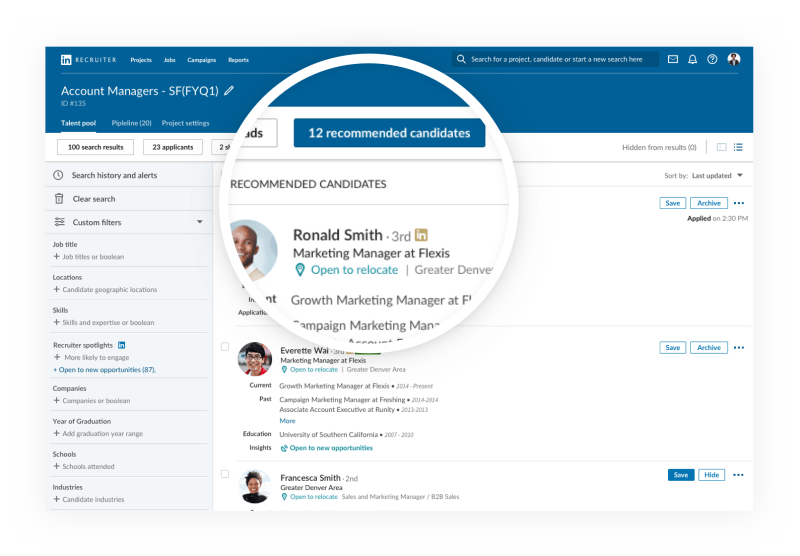
Above: LinkedIn Recommended Candidates.
VP of flagship Kiran Prasad said work is underway on new features that’ll boost engagement further, like a robust comment search that will enable recruiters to drill into conversations and leads. He also highlighted LinkedIn’s investments in editorial content and curation with efforts like the Daily Rundown, a digest of news that’s sent to “millions” of the more than 610 million people on LinkedIn each day.
“We’ve actually made a lot of investments. We’re going to make comments search … much more central, due to our search ecosystem,” he said. “So we are [also] very focused on trying to get people … the news that they need in order to be successful in their career, [and so] we have a number of tools that we’ve sort of built out over the last year and are going to continue to build out over the next few years.”
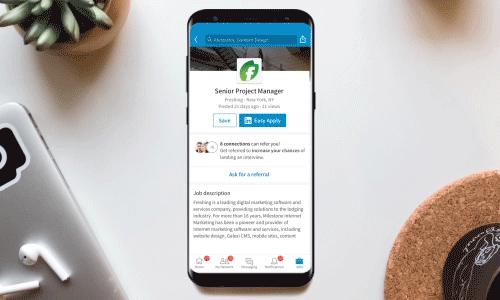
Above: Asking for a referral on LinkedIn.
As for Glint and its clients, VP of product Jim Barnett said his team is architecting solutions designed to increase inter-organization interactions.
“As part of our platform, we’re building a next-generation performance product that includes things like check-ins, conversations and reviews, OKRs, and goals tracking, as well as peer-to-peer feedback and recognition,” he said. “[We’re building a variety of features … to help managers take action [by] identifying their strengths and opportunities. “
